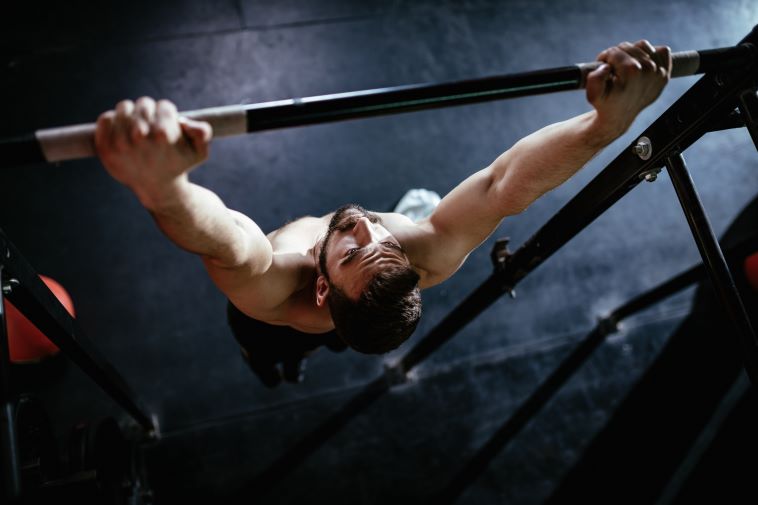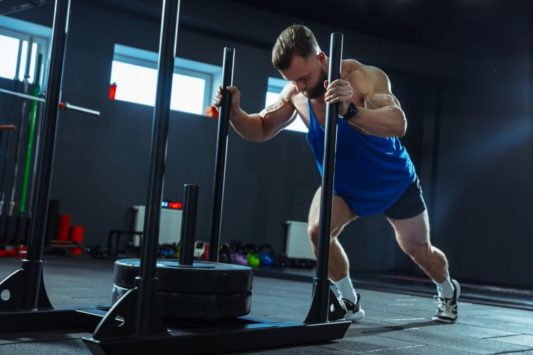Having an aesthetic physique is one of the main goals people aspire to achieve through weight training. Within the last few years, there has been an increase in the number of people who train simply to look better. One of the most important features when it comes to creating a well-rounded, proportionally sound physique is the back.
A physique with wide lats (Latissimus-Dorsi) gives off the illusion of a smaller waist. It’ll also give you that “V-taper” look – not only this but adding thickness to the back will help to improve your posture by pulling your shoulder back.
Your back is also important when it comes to performing big compound movements like the barbell back squat and the deadlift. The stronger and better developed your back is, the more stable you’ll be performing the exercises which release the most testosterone. By having a strong back, you’re more able to activate your lats throughout the pulling motion of the deadlift in order to keep your back straight and reduce the risk of injury. As well as this, having a stronger back when squatting can stop your upper back from arching and putting extra stress on the lower back.
Training to Build a Bigger Back
When it comes to training your back, there are a few things you need to consider. These include the frequency you train each muscle group, the training split you choose to use, and the exercises you decide to incorporate into your routine.
What’s the best training split to use?
Ideally, you should aim to hit each muscle group twice per week. For a lot of people this is almost impossible unless you hit the gym numerous times per day; for example, if you follow a single body part split and train; legs, chest, arms, shoulders and back all on different days.
In order to pass this barrier, you should consider changing your split to a 3 or 5-day split. A 3-day split would consist of a “Push day, Pull day, and Leg day”. If you go through this split twice per week you’ll leave a day of rest before you start the week over. Alternately, you can opt for the 5-day split which would incorporate “Pull day, Push day, Leg day… Upper day & Lower day”, and leave 2 days of rest. Upper and Lower typically combine the biggest movements from the Push and Pull days with a couple of arm exercises.
How should you structure your Pull day?
It’s important to recognise that if your training plan maintains the same routine each week, you’ll naturally become better at those you perform first. This is why it’s important to swap exercises around each time you come to complete the specific day.
For example, you follow the 3-day split consisting of “Pull, Push, Legs.” After you’ve completed the first three days you’ll be back to your second Pull day. Let’s imagine that on the first Pull day you prioritised the exercises that targeted the width of your back (vertical movements), followed by the exercises which target more of the thickness (horizontal). On your second Pull day you’ll want to switch the order of those exercises around to ensure your volume is as equal as possible; unless of course, you wish to increase one aspect more than the other.
What else does Pull day include?
As well as vertical and horizontal pulling motions, it’s important to remember that the shoulders and traps are activated using upright rowing movements and lateral movements as well. This means that your Pull workouts should consist of vertical pulls, horizontal pulls, upright raises, lateral raises, retraction of the scapular to isolate the rear deltoid, and exercises for the biceps. Opposing this, on your Push day you’ll need to complete a range of vertical presses (for shoulders), horizontal presses (for the chest) with variations of rotation, and exercises for the triceps.
In terms of prioritising your exercises, you should start with the muscle group you want to make the most progress on and thus train the freshest. If you’re happy with the shape and size of your biceps, you can leave them until last, otherwise, bring them forward in your training schedule pecking order. Likewise, the case should be the same with your shoulder accessory work.
Pull Day Routine
Below I’ve created 2 examples Pull workouts to display some of the exercises you could use for both variations of your pull day. These sessions have followed the aim of working the thickness and width of the back to the highest extent and placing slightly less emphasis on the shoulders and biceps.
Note: The priorities of the main compound movements (exercises 1-2 and 3-4) have been altered from session 1 to session 2. You should also note that the rep ranges and amount of sets performed are completely down to individual preferences. I would advise someone with the goal of hypertrophy for all of the muscle groups to start by performing 3 sets of each exercise between 8-12 repetitions.
Pull Day 1
Exercise One: Vertical Lat Pull-Down (Shoulder Width Grip)
Exercise Two: Vertical Cable Pullovers (EZ Bar, Supinated Grip)
Exercise Three: Seated Horizontal Row (Narrow Neutral Grip)
Exercise Four: Bent-Over Horizontal Barbell Row (Choice of Pronated or Supinated Grip)
Exercise Five (Super Set): Rear-Delt Machine Flye + Dumbbell Lateral Raise
Exercise Six (Super Set): Standing Barbell Biceps Curl + Cable (Rope) Biceps Hammer Curl
Pull Day 2
Exercise One: Seated Horizontal Row (Narrow Neutral Grip)
Exercise Two: Bent-Over Horizontal Barbell Row (Choice of Pronated or Supinated Grip)
Exercise Three: Vertical Lat Pull-Down (Shoulder Width Grip)
Exercise Four: Vertical Cable Pullovers (EZ Bar, Supinated Grip)
Exercise Five (Super Set): Dumbbell Lateral Raise + Rear-Delt Machine Flye
Exercise Six (Super Set): Cable (Rope) Biceps Hammer Curl + Standing Barbell Biceps Curl
End Note
This training plan has 2 exercises for a vertical pull, and 2 exercises for the horizontal pull. You may wish to decrease these to 1, and add in further exercises for biceps and shoulder accessories. Another modification for more advanced lifters could be adding in a bigger compound movement, to begin with, such as rack-pulls or deadlifts.
About The Author
George Platt is a Personal Trainer, Online Coach and Fitness/Nutrition Writer. George’s passion for physical activity and health developed from a young age after having open-heart surgery. You can find out more about George via his website or Instagram: @GeorgePFitness93




